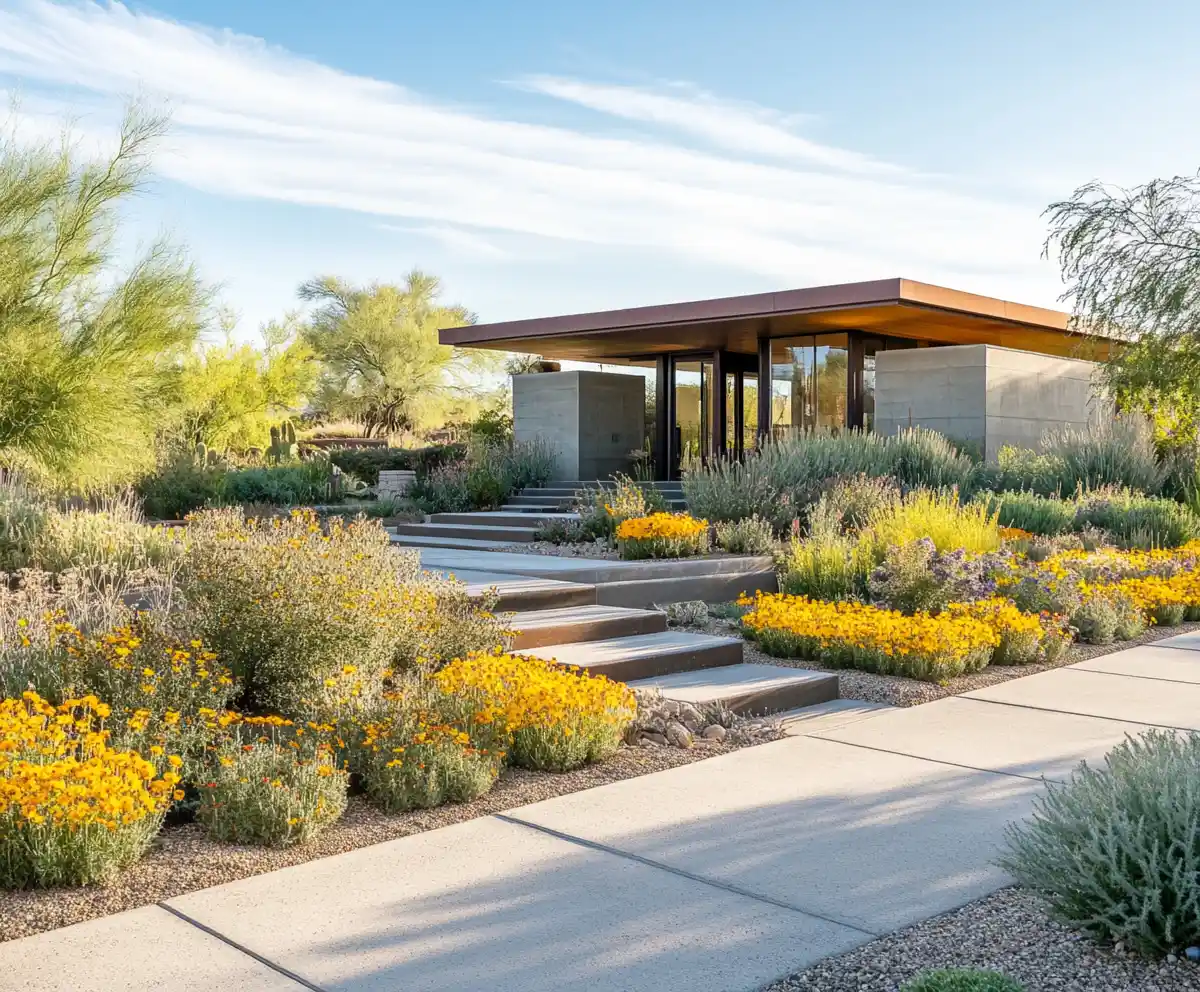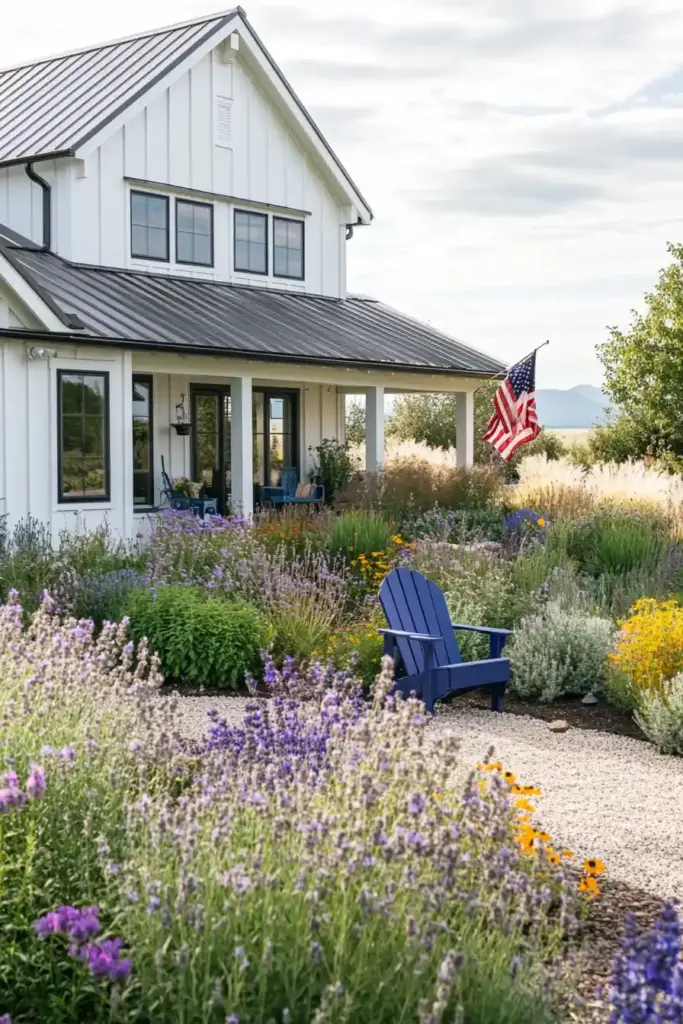Your front yard is the first thing guests and passersby notice — it’s your home’s welcome mat to the world. Thoughtful landscaping doesn’t just enhance beauty; it can significantly increase your home’s value, too. Whether you love the charm of traditional gardens, the sleekness of modern designs, or the romance of blooming florals, there’s a front yard idea that’s perfect for your space. Let’s dive into some inspiring ways to make your front yard the envy of the neighborhood.
01. Extend Plantings to the Curb
Don’t stop your garden beds at the front porch — extend them all the way to the sidewalk for a welcoming, cohesive look. Planting along the parking strip (the area between the sidewalk and street) creates a seamless, lush feel that draws the eye all the way to your door. Hardy, low-maintenance plants like lavender, ornamental grasses, or groundcovers thrive in these exposed spots and add seasonal color and fragrance. Plus, this approach instantly softens the space between your home and the street, giving your yard a more expansive, curated feel.
02. Embrace Cottage Style
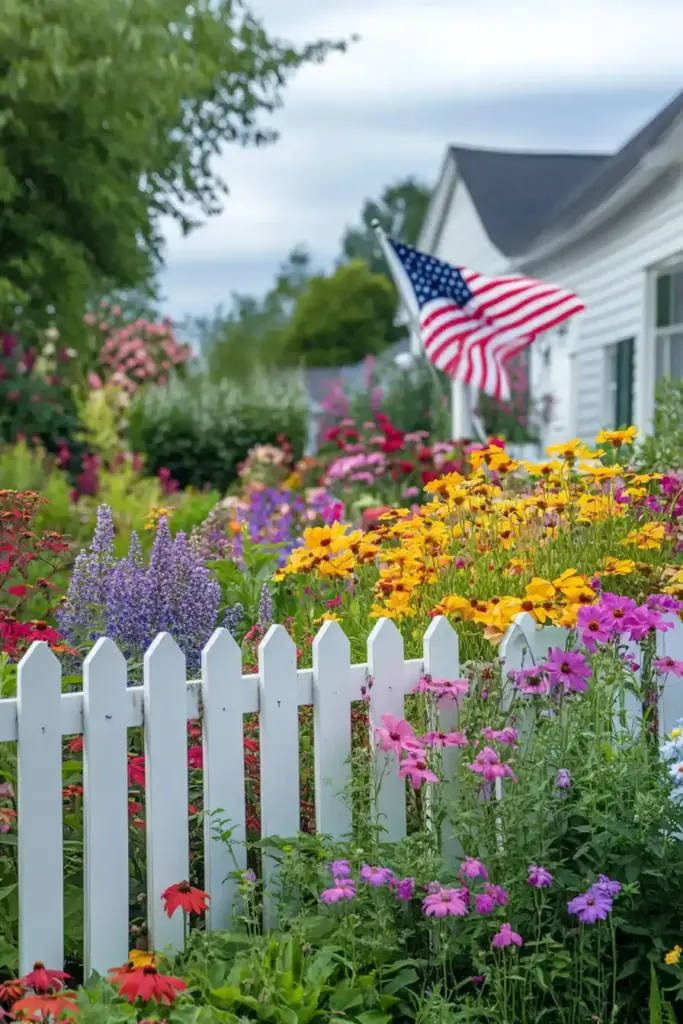
If you love a relaxed, storybook look, a cottage-style front yard might be your dream come true. Think layers of bright, bold perennials like coneflowers, daisies, and hollyhocks spilling over curved garden beds. Instead of rigid rows, aim for an informal layout where plants mingle freely, creating a colorful, cheerful chaos. Add a charming picket fence or a winding stone path to complete the enchanting feel. This style not only boosts your curb appeal but also invites butterflies and pollinators to join the lively scene.
03. Beautify a Slope
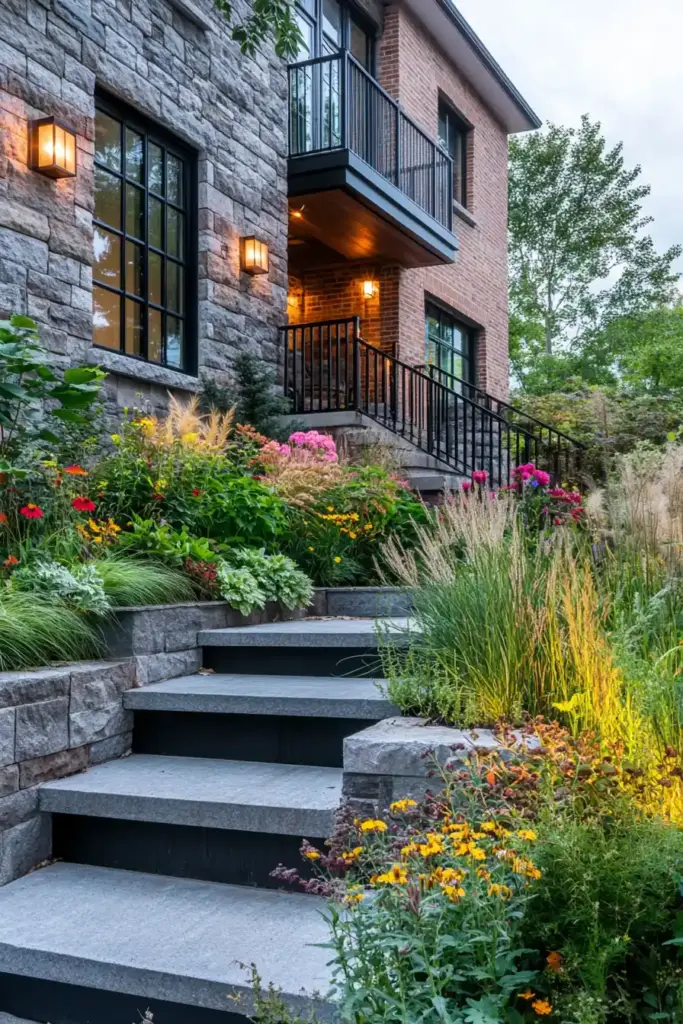
Sloped front yards can feel like a challenge, but they’re actually a golden opportunity for stunning landscaping. Instead of struggling with constant mowing, cover slopes with a mix of groundcovers, perennials, and low-growing evergreens. Plants like creeping phlox, juniper, and sedum create a colorful, textured tapestry that also helps prevent soil erosion. For extra visual impact, layer taller plants at the top and lower ones near the base, allowing your slope to naturally cascade with color and greenery.
04. Let Nature Be Your Guide
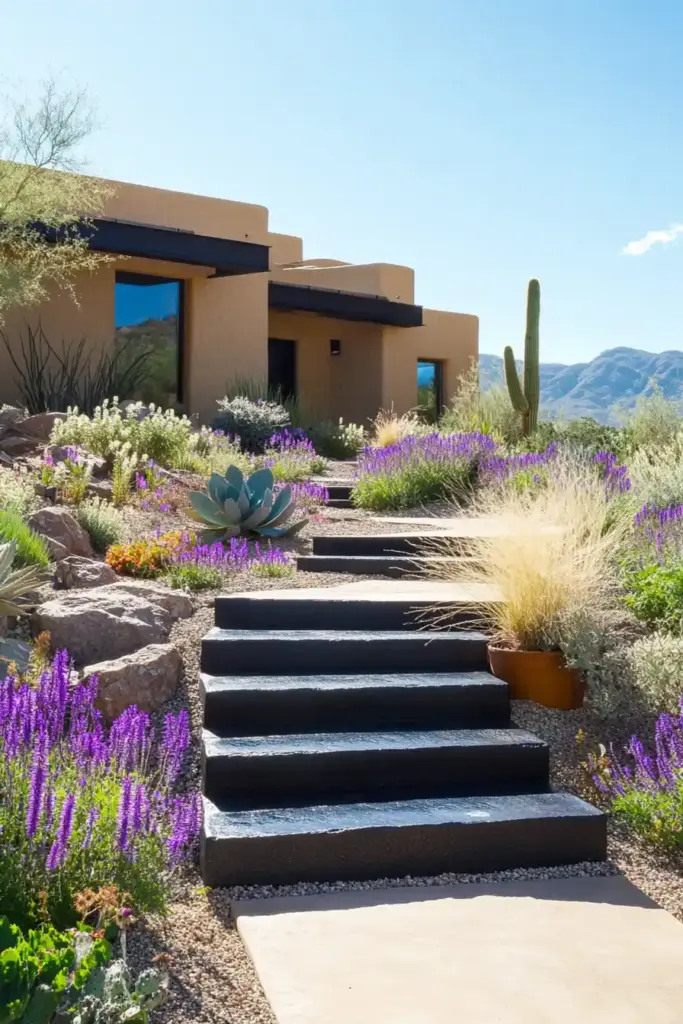
When you design your front yard with native plants, you’re not just creating beauty — you’re building an ecosystem. Native flowers, shrubs, and trees are adapted to your local climate, meaning they require less water and maintenance. Plus, they attract beneficial wildlife like birds, bees, and butterflies. Consider planting coneflowers, black-eyed Susans, or native grasses to craft a front yard that feels effortless and alive. By working with nature instead of against it, you create a vibrant, sustainable landscape that thrives year after year.
05. Set a Formal Tone
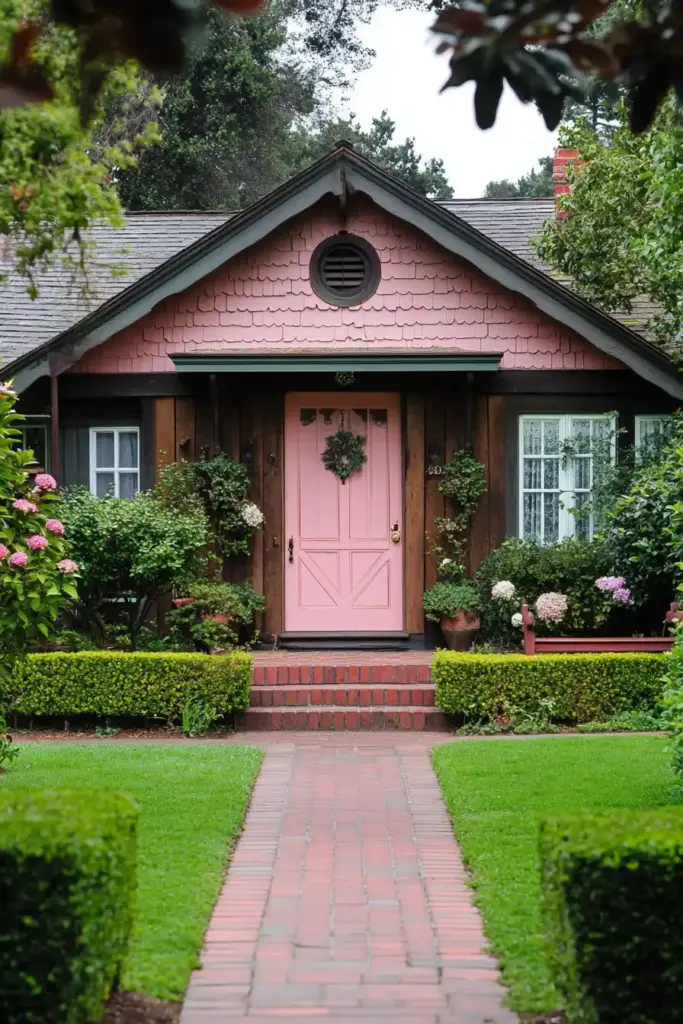
If you prefer a polished, elegant look for your front yard, a formal landscape design could be the perfect fit. Start by framing your pathways or beds with neatly trimmed boxwood hedges, which bring structure and symmetry. Stick to a classic color palette — green foliage paired with white blooms always feels timeless. Accent the space with tasteful garden ornaments like stone urns, a central fountain, or symmetrical topiaries. This structured approach not only highlights your home’s entrance but also adds a sense of grandeur and refinement.
06. Go Green in the Front Yard

Sometimes the most powerful statement is one of simplicity. Filling your front yard with a variety of evergreen plants creates a lush, layered look that shines year-round. From compact boxwoods to towering spruce trees, evergreens offer texture, structure, and rich color through every season. Mix different shades of green and play with shapes — rounded shrubs, columnar trees, and cascading groundcovers — to create visual interest without relying heavily on flowers. Plus, an evergreen-focused yard requires less seasonal replanting, making it a low-maintenance win.
07. Create a Buffer
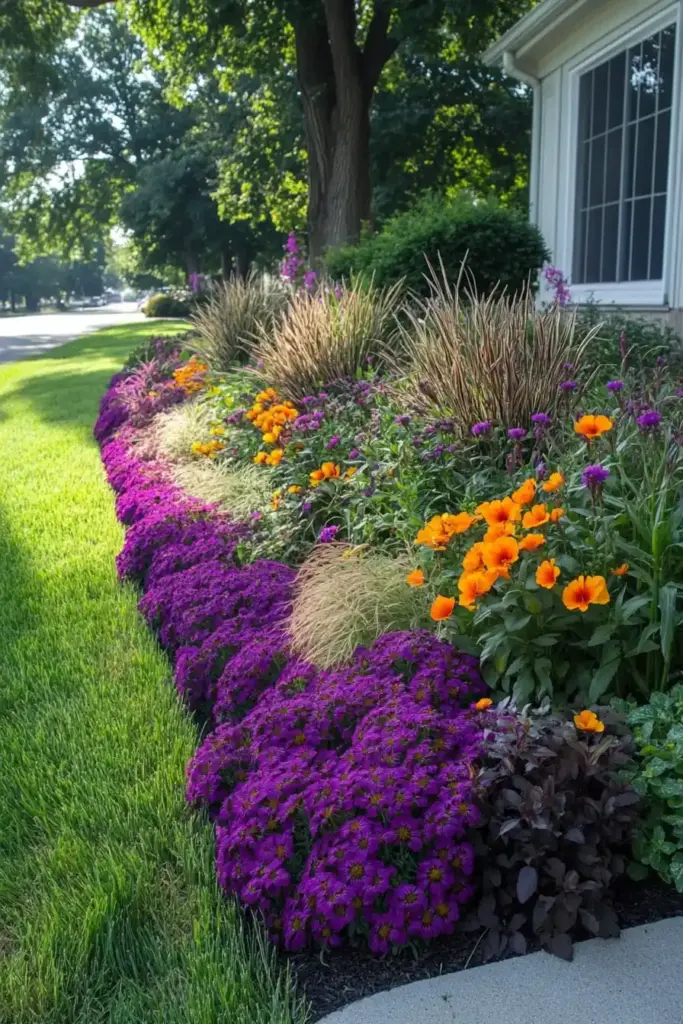
A front yard can be beautiful and functional when you use landscaping to create a buffer from street noise or busy sidewalks. Medium-sized shrubs, dense grasses, and layered plantings act like a natural sound barrier while maintaining an inviting appearance. Choose plants like hydrangeas, viburnum, or tall ornamental grasses to soften noise and add lushness. For even more privacy, layer in lower-growing plants near walkways and taller varieties closer to your home. This creates a cozy, secluded feeling without building an actual wall.
08. Accent With Containers
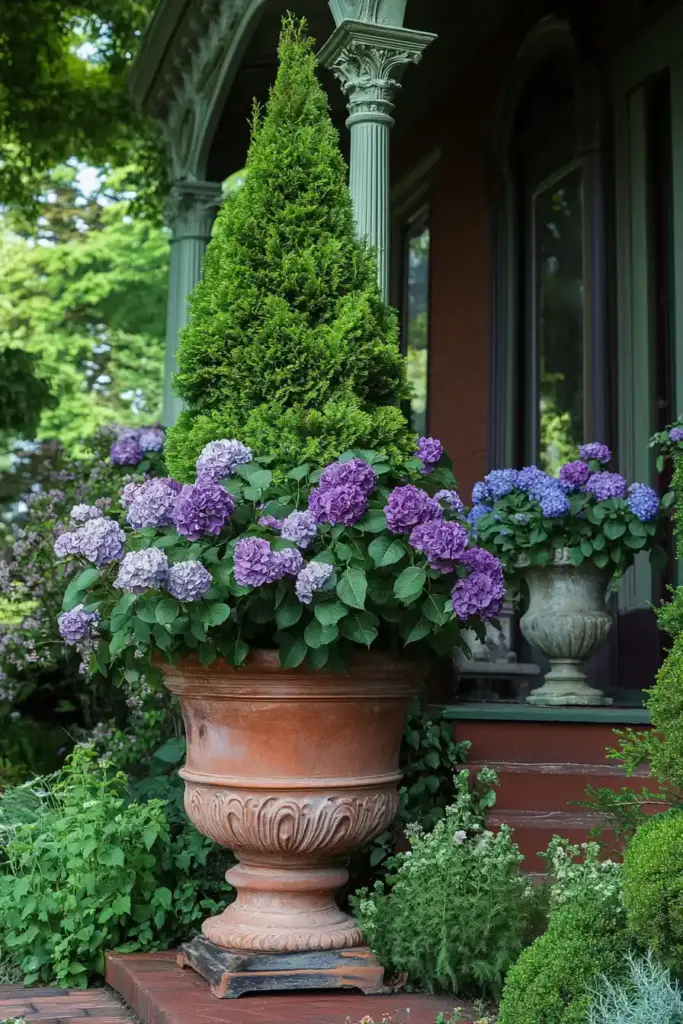
Container gardening is a simple yet powerful way to add instant charm and color to your front yard. Strategically place pots filled with seasonal flowers, ornamental grasses, or compact evergreens near your entryway, along paths, or even by the mailbox. Choose containers that complement your home’s exterior style—think classic terracotta, sleek modern planters, or rustic wooden boxes. Containers also give you the flexibility to easily switch up your look with the seasons, keeping your curb appeal fresh and inviting all year long.
09. Plant Symmetrically

Symmetry is a powerful design principle that instantly makes a front yard feel organized, balanced, and welcoming. Mirror-image planting beds on either side of your walkway or front door create a sense of harmony and sophistication. Use matching shrubs, trees, or flower groupings to anchor your design, and make sure pathways and focal points, like a bench or water feature, are centered for maximum impact. Even a few symmetrical touches can bring a polished, intentional look to your landscape.
10. Play Off the Architecture
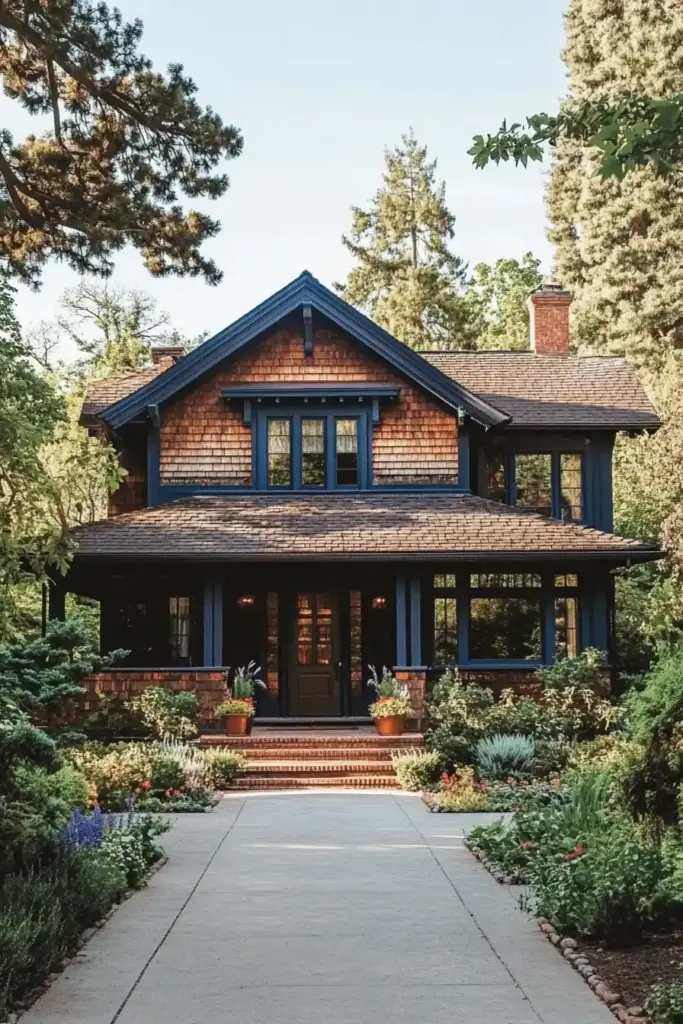
Your home’s architecture should be the blueprint for your front yard landscaping. Echo the lines, colors, and textures of your house in your plant choices and hardscape elements. For example, a brick home pairs beautifully with warm-toned flower beds and classic boxwoods, while a sleek modern facade calls for minimalist plantings like ornamental grasses or sculptural succulents. By aligning your landscape with your home’s style, you create a cohesive, visually pleasing flow that enhances both the yard and the structure.
11. Use Space Smartly
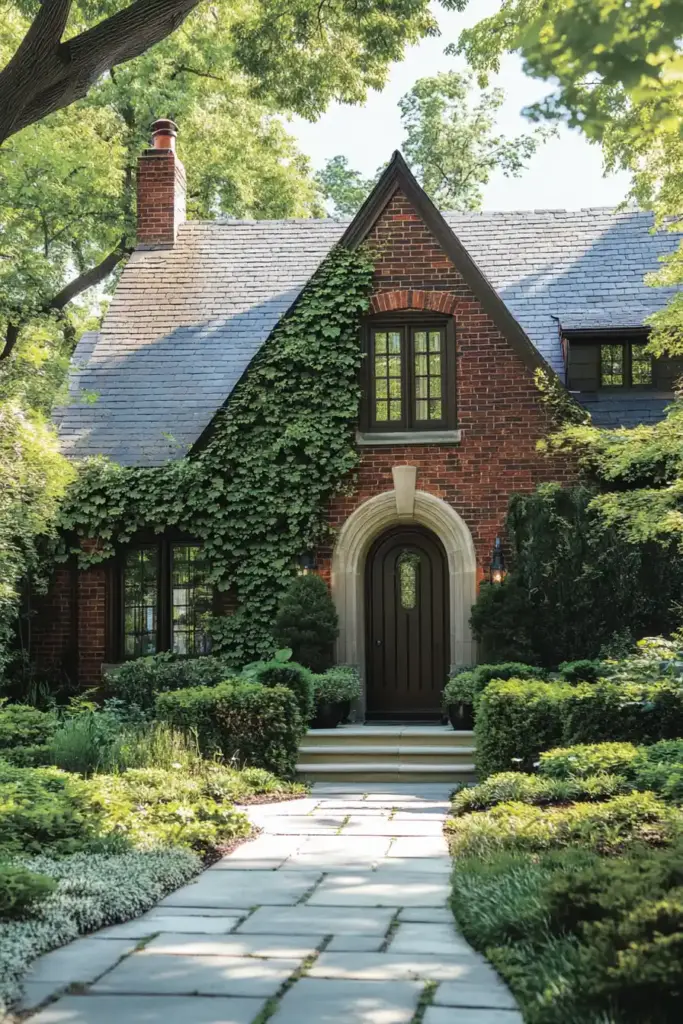
Even small front yards can pack a big visual punch with thoughtful design. Maximize your space by layering plants of different heights — taller shrubs in the back, medium-sized perennials in the middle, and low-growing groundcovers in the front. Curved pathways, raised beds, or vertical features like trellises can add dimension without overwhelming the area. Choose plants that offer multiple seasons of interest, like flowering in spring and colorful foliage in fall, to keep your compact landscape lively year-round.
12. Emphasize the Entry
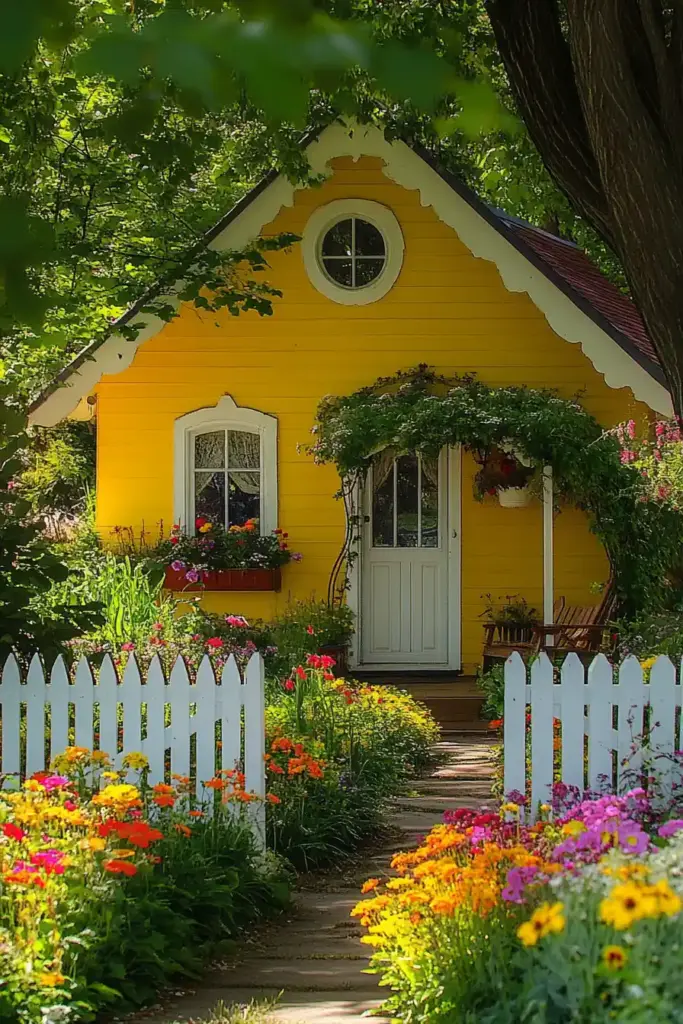
Your front door is the focal point of your home — make sure your landscaping draws the eye right to it! Frame the entryway with statement pieces like an arbor, a charming gate, or symmetrical planters brimming with colorful flowers. Use a welcoming pathway that naturally guides visitors to the door, perhaps lined with low shrubs or blooming borders. Lighting along the path or a decorative address plaque can add extra warmth and visibility, making your home’s entrance feel both inviting and polished.
13. Soften Sharp Edges
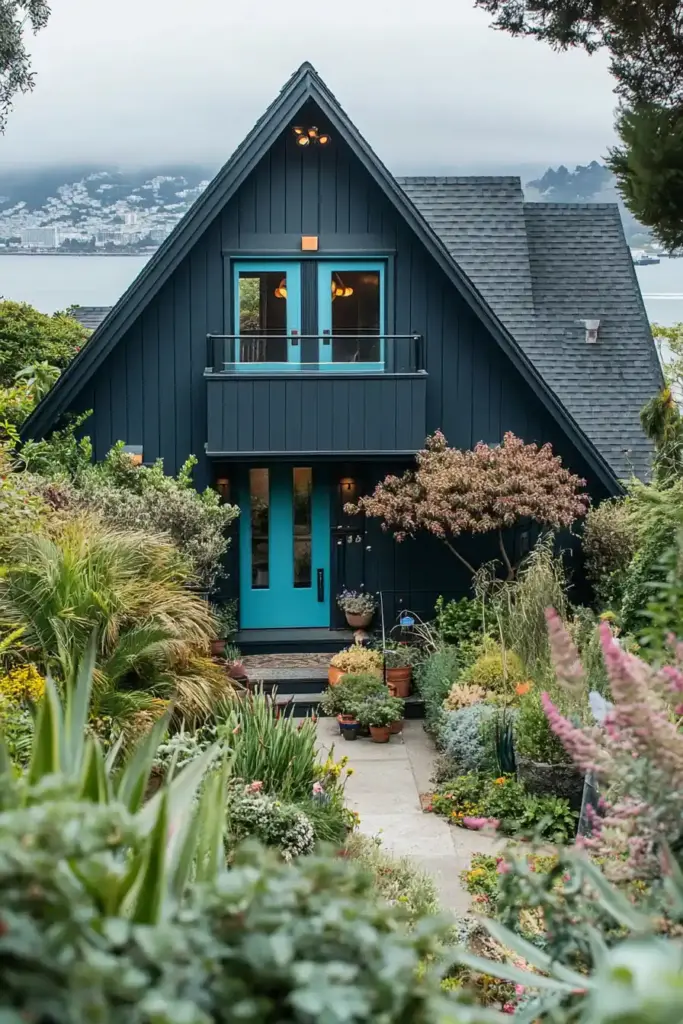
Modern homes often feature crisp lines and bold angles — landscaping can help balance that strong geometry with a touch of softness. Choose plants with flowing forms, such as feathery ornamental grasses, rounded shrubs, or cascading groundcovers, to gently blur the hard edges of walkways, walls, and patios. Incorporating a mix of textures and heights will further break up any starkness, creating a more welcoming and organic feel without losing that clean, contemporary vibe.
14. Plant for Privacy
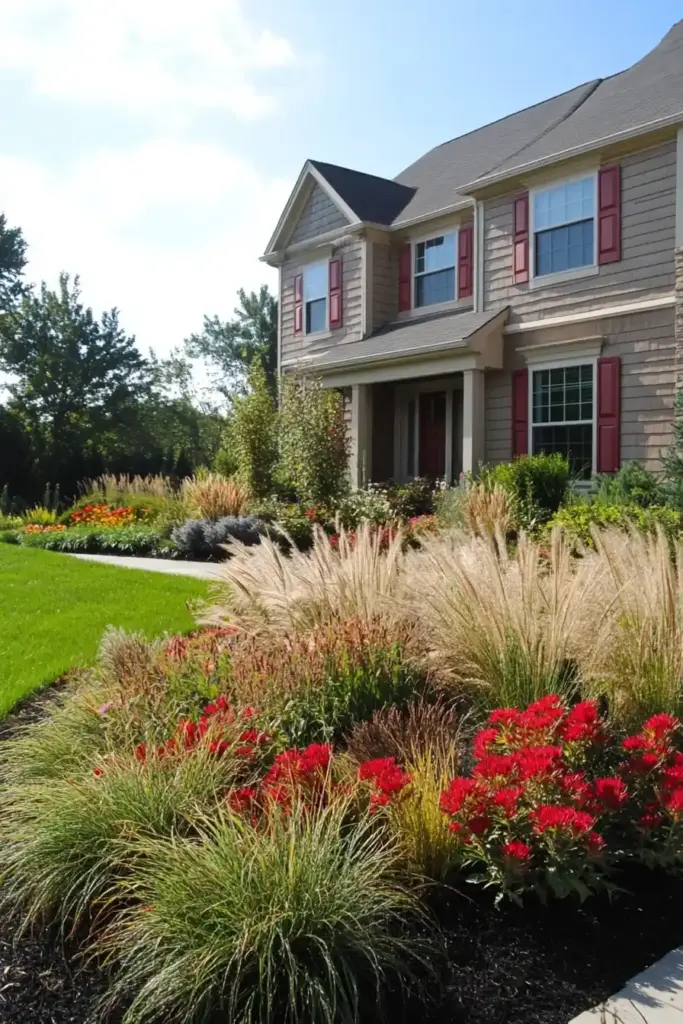
A well-designed front yard can offer both beauty and a sense of seclusion. Plant tall grasses, flowering hedges, or layered borders to create natural privacy screens without feeling closed off. Options like arborvitae, fountain grass, or even a mixed shrub border provide height while keeping the look airy and colorful. For extra charm, add flowering perennials at the base to soften the transition and give your privacy planting a vibrant, inviting feel that enhances curb appeal.
15. Replace the Lawn
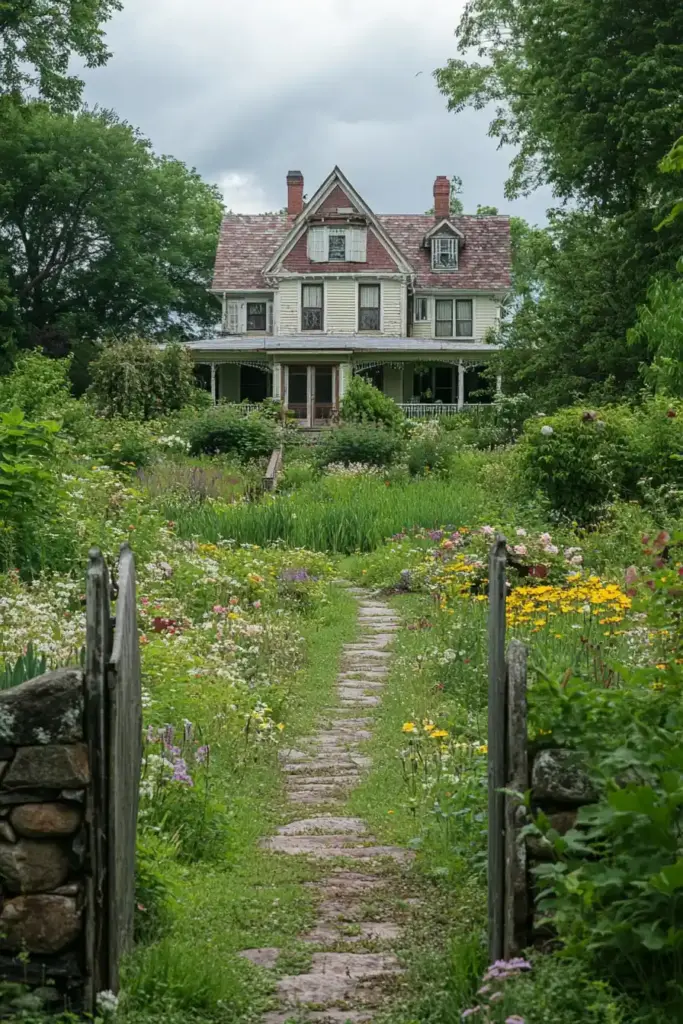
Tired of mowing and watering endless stretches of grass? Swap your traditional lawn for a dense, eco-friendly tapestry of native plants, ornamental grasses, and groundcovers. This not only reduces maintenance and water usage but also creates a vibrant, layered landscape full of texture and seasonal color. Plants like creeping thyme, sedum, and clover offer lush coverage while supporting local pollinators. A lawn-free front yard feels fresh, modern, and deeply connected to nature — plus, it turns heads for all the right reasons.
16. Combine Light with Bright
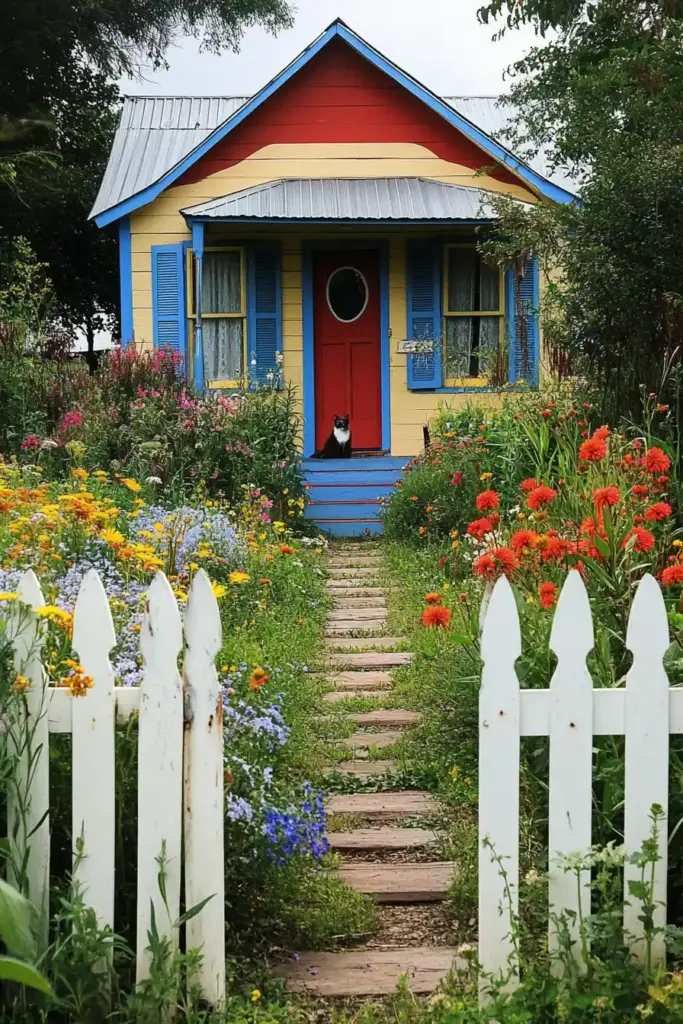
Create a front yard that truly pops by pairing light-colored structures with vivid plantings. A crisp white picket fence or pale stone pathway provides the perfect backdrop for a riot of colorful flowers — think bold reds, sunny yellows, and vibrant purples. This high-contrast approach not only brightens your landscape but also highlights the natural beauty of your blooms. The result? A cheerful, eye-catching yard that feels lively and welcoming from the curb.
17. Create a Tropical Vibe
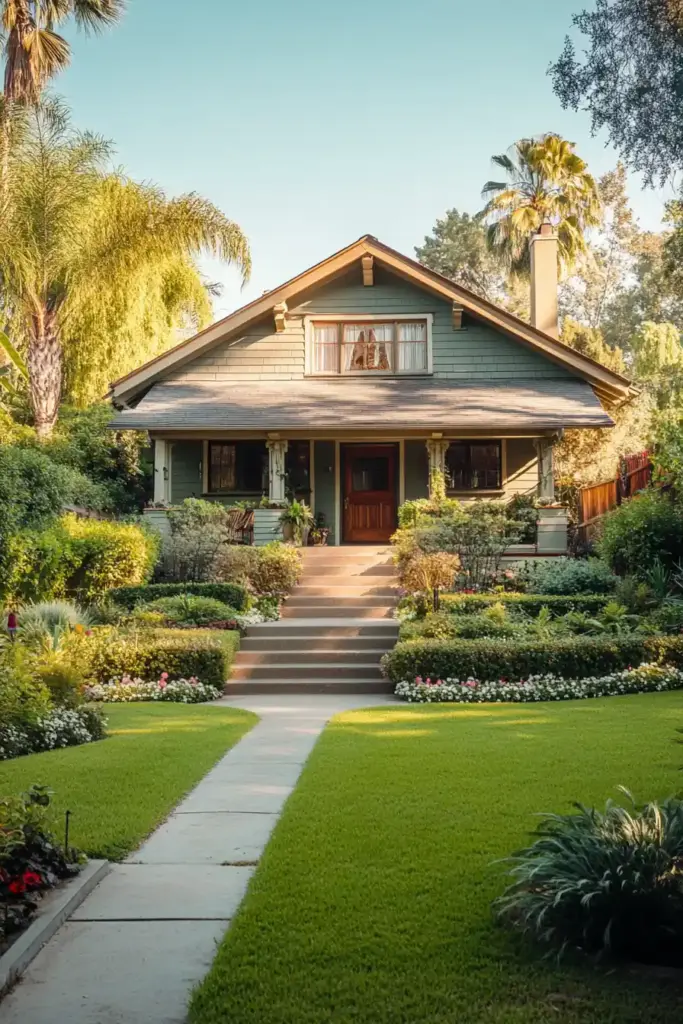
Transform your front yard into a lush, vacation-like retreat with bold, tropical-inspired plantings. Choose large-leafed plants like elephant ears, cannas, and banana plants, and mix them with hot-colored flowers like hibiscus, bird of paradise, or bright zinnias. Layer these dramatic textures and vibrant hues to evoke the feeling of a tropical paradise — even if you’re nowhere near the equator. Adding a few strategically placed palms or ferns can amplify the exotic atmosphere and make your yard feel like a permanent getaway.
18. Layer Shapes and Shades of Green
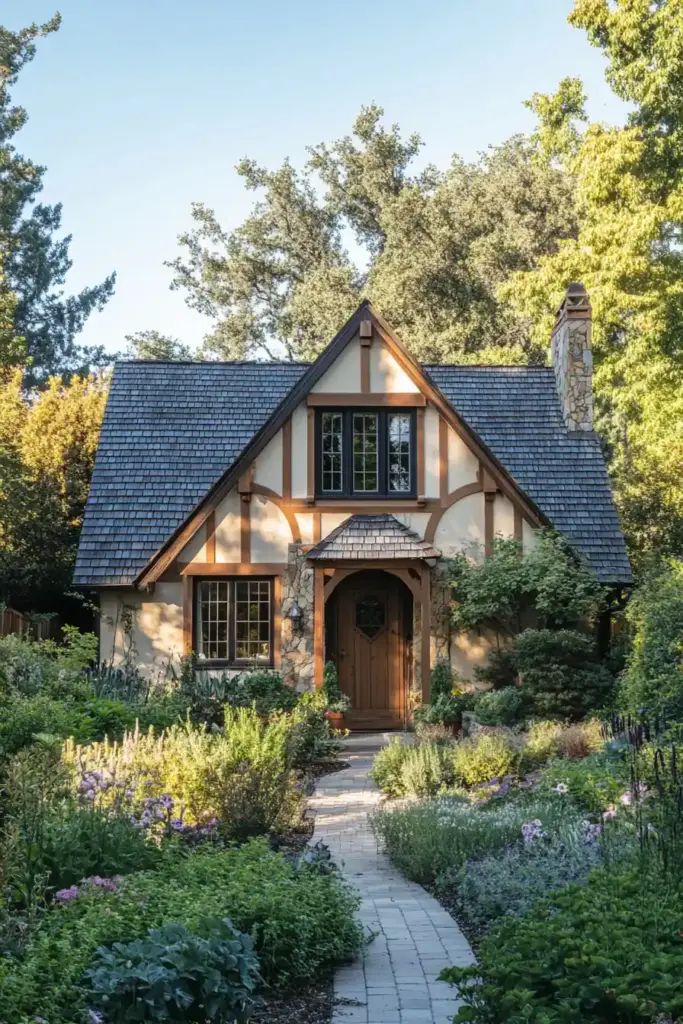
Green is far from boring when you play with different shapes, sizes, and textures. Create depth and interest in your front yard by layering mounding shrubs, wispy grasses, and sculpted topiaries. Mix dark, rich evergreens with lighter, silvery greens to build a dynamic, soothing palette. This technique adds movement and subtle drama without overwhelming the space, making it perfect for a sophisticated, low-maintenance landscape that looks beautiful year-round.
19. Plant a Tapestry
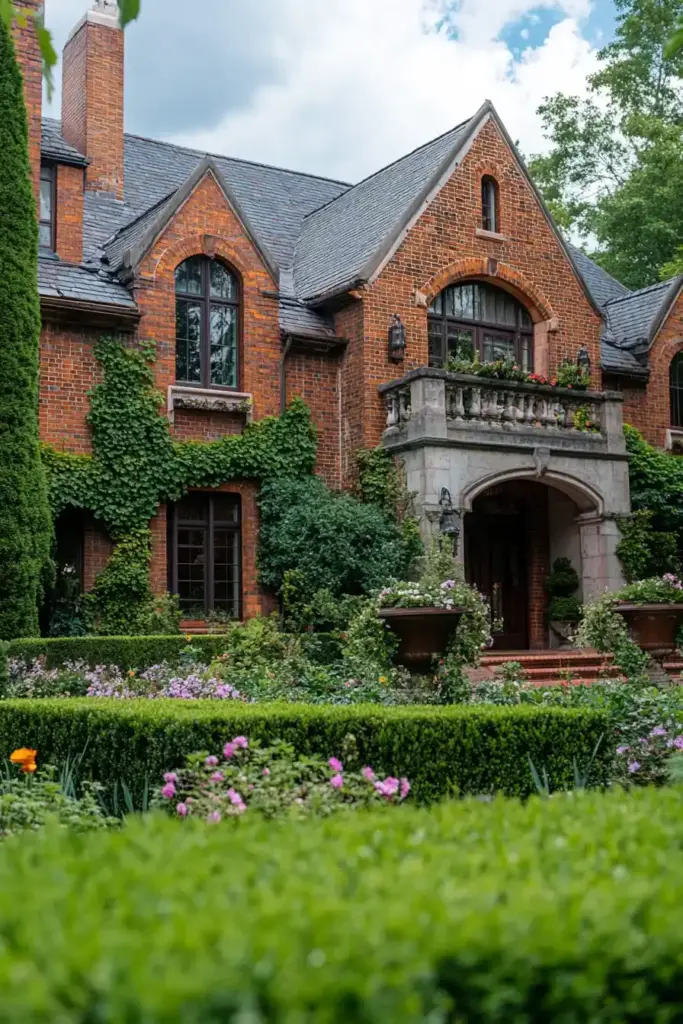
Think of your front yard as a living quilt by weaving together a variety of plants that reflect your home’s style and personality. Mix low hedges, colorful perennials, textured grasses, and small trees to create rich, layered patterns that feel both cohesive and dynamic. Repeat shapes, colors, or plant types throughout the space to tie everything together visually. This tapestry approach not only boosts curb appeal but also gives your landscape a sense of rhythm and intentional design that naturally complements your architecture.
Frequently Asked Questions
How do I pick the best front yard landscaping style for my home?
Start by considering your home’s architecture and your personal taste. Traditional homes often pair well with formal designs, while modern homes shine with minimalist or tropical landscapes. Think about maintenance, climate, and how you want your front yard to feel — structured, relaxed, colorful, or serene.
What are some low-maintenance front yard landscaping ideas?
Low-maintenance options include planting native plants, using evergreens for year-round color, replacing lawn areas with drought-tolerant groundcovers, and adding container gardens. Choosing plants that naturally thrive in your climate will save time, water, and effort.
Can I landscape a small front yard and still boost curb appeal?
Absolutely! Focus on layering plants of different heights, using vertical elements like trellises, and creating clear focal points, such as a colorful front door or a charming pathway. Thoughtful design can make a small space feel larger and more inviting.
What plants are best for adding privacy to the front yard?
Great options for natural privacy screens include arborvitae, boxwood hedges, tall ornamental grasses, and flowering shrubs like hydrangeas. Layering plants of different heights can create both beauty and a sense of seclusion.
How can I make my front yard landscaping more eco-friendly?
Use native plants that require less water and care, incorporate permeable pathways to reduce runoff, replace sections of lawn with pollinator-friendly gardens, and avoid chemical-heavy fertilizers and pesticides. Eco-friendly yards are not only better for the environment but also often easier to maintain.
Conclusion
Transforming your front yard doesn’t have to be overwhelming — with the right ideas and inspiration, you can create a space that’s both beautiful and welcoming. Whether you extend your plantings to the curb, embrace a cottage-style garden, or replace your lawn with a colorful tapestry of native plants, each choice you make adds personality and value to your home. Start small, think creatively, and let your landscape reflect the heart of your home. Happy planting!

